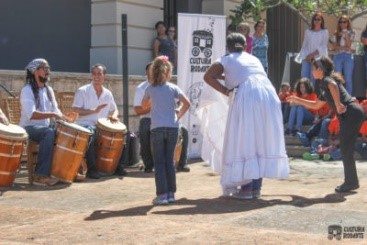This session spoke to me deeply from my own experience deployed this year in my local public health department’s Covid-19 vaccination campaign. Whether it was being yelled at by angry people during the early days of limited supply and restricted eligibility, the unrelenting and thankless demands of countering disinformation and overcoming distrust, the highs of contributing to saving lives, the lows of confronting your own personal and institutional shortcomings, and the destructive self and interpersonal dynamics that can emerge under extreme stress…I got a small taste of the demands facing healthcare providers, demands that were heightened by the Covid crisis.
Tram nguyen's Blog
Two things jumped out at me the most from this workshop. The first was the set of sharp and wise recommendations for guiding organizational change and sectoral change during uncertain times from the ArtsEd Response Collective, which was convened by Ingenuity to address the immediate challenges of COVID-19 and the police murders of Black people. And the second was the deeper dive into dance as an educational tool uniquely well-suited for engaging children and youth around issues of anti-racism and racial justice.
The ARC Final Report presents a plethora of resources for arts educators and organizations, schools, and equity practitioners in adapting and innovating new strategies and best practices that are responsive to the challenges of remote learning and pandemic conditions. The report lifts up what I think is one of the most important principles for any sector during these times of rapid change and volatility—to commit to open source knowledge sharing and learning, which is part of recognizing that we must engage in building anew and that “experimentation is now a part of the new operating norms for every industry…in order to do important work in an uncertain landscape.”
Community-based art from my vantage point sounds a lot like community organizing.
The projects described by artists Chemi Rosado Seijo, Jesús ‘Bubu’ Negrón, and Edgardo Larregui make me think of the possibilities that emerge at the edges between creative disciplines, in service and collaboration with communities. These art projects were incubated by professional artists in dynamic partnership with residents, democratizing the arts among marginalized communities, uplifting and nourishing community life, and sparking the possibility for new solutions small and large.
I love traditional and folk art for its intimacy. My most treasured art, the only ones I have in my home, are a pair of Oaxacan tapestries I bought from a family of Indigenous weavers in the village of Teotitlan del Valle. We sat together in their home—which was also their workroom with wooden looms and stone mortars and pestles for grinding indigo and cochineal dyes—and spoke of the symbolic meanings of designs representing the elements of earth, water, fire and water, and the cycle of birth and death. In house after house in this village, Zapotec families maintain their way of life and sustain their local economy with weaving and selling their art.
Years later, these tapestries adorn my altar and are beloved companions of my spiritual practice. They are an intimate, daily reminder of the connective power of cultural and traditional arts. As Maribel Alvarez said, these are “practices, rituals, and ordinary overlooked aesthetics that have to do at the end of the day with living in beauty.”
An elevator. Train tracks. These two settings were sites of profound trauma and historical significance in Tulsa, Oklahoma. The elevator where a young black man bumped into a white woman one hundred years ago in Greenwood, setting off events that became the 1921 Tulsa Race Massacre. The train tracks dividing the Black part of town from the white, that were also the path Greenwood’s survivors followed on foot to escape the killing of hundreds of residents and the burning and destruction of their district known as Black Wall Street.
In 2021, the elevator and the train tracks also became art. They were both art installation and storytelling projects that emerged from the Greenwood Art Project. The initiative, funded through the Bloomberg Philanthropies Public Art Challenge, was a partnership of Bloomberg with the City of Tulsa and the Tulsa Race Massacre Centennial Commission to add a cultural component to the centennial commemoration.
Centering Indigenous self-determination, power building and movement leadership is an experience of deep learning and humility. Because of the enduring mythos of America that centers the settlers and the immigrants, and the Western worldview dominating this country’s systems, entering into Indigenous worldviews is one of the most radical shifts possible into what it means to reparate the wrongs of the past and present, and to build a regenerative, just future.
I was grateful for the invitation to listen at the roundtable talk of three powerful and wise teachers: Tina Kuckkahn (Ojibwe), director of grantmaking at NDN Collective; Gaby Strong (Dakota), managing director at NDN Collective; and Quita Sullivan (Montaukett/Shinnecock), program director at New England Foundation for the Arts.
This session began with a song of welcome from cultural practitioner and filmmaker Hinaleimoana Wong-Kalu (Native Hawaiian, Kanaka Maoli) that opened up a space for radical imagination and relationship. Artists from the 2021 cohort of NDN Collective’s Radical Imagination Grant shared their work from the project, which invests in Indigenous artists’ community-based expressions of “a radically imagined, more just and equitable future.”
Engaging with this work—whether it be taking in fine art photography and film, hearing Native languages spoken and sung, or learning about specific customs and ceremonial practices within the context of decolonization—is about experiencing the gift of centering Indigenous worldviews and knowledge.
How can mid-level leaders identify what is within their power to change when they don’t hold the top position? How can they develop their own management skills to lead with equity at the center?
The status quo in most institutions’ leadership and organizational development efforts is that all too often “executive coaching” is reserved for top leaders and periodic, one-off trainings for everyone else. This makes the coaching initiative being pioneered by NAS and Barr Foundation all the more visionary and cutting edge, with its focus on making coaching more broadly accessible and its strategic targeting of mid-level and emerging leaders within arts organizations.

What does it look like to build another possible world, in the midst of resisting and surviving the assault on your present one?
Perhaps it looks like installing solar panels in homes, groceries, the fire station, and the cinema of your town; and during Hurricane Maria when much of Puerto Rico lost power for extended periods of time, becoming an “energy oasis” for the community. Perhaps it looks like owning your own radio station and newspaper, selling coffee to support community programs, and setting up a Bosque Escuela, a school in the forest to teach conservation and sustainable development.

During the first months of pandemic lockdown, I really got into watching historical documentaries, perhaps for the escape out of our own times. One of my favorites was the National Geographic series “The Greeks” on Disney Plus. I was struck with the archaeological finding that, after the collapse of the first ancient Greek civilization, it was the arts that nurtured the society’s survival and re-emergence through an ensuing dark age. Drawings on pottery and wine vats, jokes scribbled in cuneiform. These artifacts were a testament that through millennia, human beings have found recovery from disasters in much the same ways—starting with nurturing our shared humanity and creative spirit.
